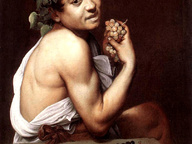Christian Fogarolli. A Form of Delusion

Christian Fogarolli, A Form of Delusion | Courtesy of Galleria Alberta Pane, Venezia
Dal 12 February 2022 al 2 April 2022
Venezia
Luogo: Galleria Alberta Pane
Indirizzo: Calle dei Guardiani - Dorsoduro 2403/H
Orari: Mar - Sab 10.30 - 18.30 e su appuntamento | Dom - Lun chiuso
Curatori: Pier Paolo Pancotto
Costo del biglietto: Ingresso libero
Telefono per informazioni: +39 041 564 8481
E-Mail info: info@albertapane.com
Sito ufficiale: http://albertapane.com
A Form of Delusion, a cura di Pier Paolo Pancotto, è la prima esposizione personale di Christian Fogarolli nella sede veneziana della Galleria Alberta Pane.
La mostra offre al pubblico la possibilità di interagire con un corpus di opere, molte delle quali installative, pensato appositamente per gli spazi della galleria.
Nel lavoro artistico di Christian Fogarolli passato e presente compenetrano in lavori fotografici, installazioni, sculture e video; tracce e frammenti di un tempo indefinito si legano a materiali vitrei, specchianti, metallici, organici e tecnologici.
Partendo da un’indagine storico-archivistica e attraverso collaborazioni dirette con centri di ricerca scientifica, l’artista lavora seguendo un approccio interdisciplinare, che guarda alla ricerca medica, psichiatrica, psicologica, antropologica e alle scienze naturali.
Da quasi un decennio e con grande coerenza Christian Fogarolli realizza opere in cui viene messa in discussione la separazione tra corpo e mente, tra sensi e intelletto, tra normalità e devianza, nell’intento di stimolare una riflessione sulle attribuzioni normative di malattia, emarginazione e categorizzazione nella società contemporanea.
Antonin Artaud (1896 - 1948) in occasione dell’Exposition coloniale internationale di Parigi del 1931 ebbe modo di entrare in contatto con il teatro balinese ricevendone una forte impressione. Tale circostanza fu alla base delle sue teorie sul Théâtre de la Cruauté raccolte in Le Théâtre et son double (1938) ove il termine crudeltà sta a indicare un esercizio di disturbo, di acuto disagio interiore nel quale coinvolgere lo spettatore affinché, per mezzo della rappresentazione teatrale, possa raggiungere una sorta di catarsi. Tale esperienza, così come nel teatro balinese, si compie attraverso una sorta di rituale dal carattere multisensoriale grazie al quale è possibile elevare il proprio grado di conoscenza della realtà.
In qualche modo, pur con le dovute differenze, anche l’azione creativa di Christian Fogarolli (Trento, 1983) si svolge in termini analoghi. Sin dagli esordi, infatti, egli accompagna lo spettatore in un’indagine sull’individuo, nei meandri del suo intelletto, coinvolgendo spesso nelle proprie creazioni e argomentazioni soggetti “scomodi” in grado di provocare in alcuni casi un senso di disturbo. Così, sottoponendo a shock visivi e tematici, egli richiama l’attenzione e induce a riflettere su soggetti apparentemente distanti dal suo vissuto personale ma, nel fondo, assai meno di quanto egli possa immaginare poiché incentrati sull’analisi delle capacità mentali, emotive e comportamentali dell’essere umano. Vale a dire, una dimensione all’interno della quale chiunque, in un modo o nell’altro, può individuare una propria ragione d’interesse sul piano soggettivo e oggettivo e, talvolta, anche identificarsi.
Sostenuto da un percorso formativo inconsueto per un artista visivo (lauree in archeologia e storia dell’arte seguite da un master in diagnostica e restauro al posto di studi accademici regolari) da circa un decennio egli si dedica all’esercizio creativo mantenendo un approccio quasi più da intellettuale - o da collezionista, archeologo, filologo a seconda dei casi - che da tradizionale operatore del settore. L’autore basa il suo operato facendo precedere la teoria e lo studio di varie discipline - dalla storia alla storia dell’arte, dalla scienza alla filosofia, dalla psicologia alla psichiatria, dall’antropologia alla tassonomia, dalla tutela del patrimonio artistico all’analisi dei materiali - alla pratica. Una linea di condotta che, oltre a portarlo ad essere una figura atipica nel panorama artistico contemporaneo, rende la sua ricerca quanto mai libera, allontanandola da parametri di giudizio in grado di vincolarla in una specifica categoria. Traendo spunto da studi condotti tra musei, archivi, biblioteche e centri di ricerca, oltre che dall’approfondimento dell’opera di autori diversi per epoca e campo d’applicazione (tra loro Jean Martin Charcot, Charles Darwin, Gian Battista Della Porta, Cesare Lombroso, Oliver Sacks, Aleksandr Lurija, Georges Canguilhem, Francesco Remotti, Clifford James Geertz...), egli dà luogo ad una ricerca che si pone a metà strada tra le discipline scientifiche e le arti plastiche lasciando che, come in un gioco di vasi comunicanti, gli assunti teorici contenuti nelle prime si fondano con i sistemi linguistici declinati delle altre, esplicitando visivamente concetti, idee, pensieri, altrimenti fruibili solo sul piano scritto o documentario. Così, affidandosi a vari sistemi espressivi come scultura, video, fotografia, installazione, spesso mescolati tra loro, Fogarolli dà forma e voce a realtà, soggettive o collettive, che spesso non ne hanno, o ne hanno mai avuta. In particolare, focalizzando l’attenzione sullo studio del rapporto mente/ cervello, egli riflette sul valore semantico dei concetti di normalità e di devianza considerati in rapporto ad epoche storiche e contesti sociali differenti in relazione alla contemporaneità. Fondamentali, in tal senso, le sue indagini effettuate presso diversi ospedali psichiatrici e centri di cura europei o la lettura di testi antichi e moderni, a sottolineare l’importanza della elaborazione intellettuale, prima che attiva, nel suo iter creativo. La mostra di Venezia A Form of Delusion ne è una conferma. Essa si compone di una serie di lavori - installazioni ambientali, sculture e fotografie - ispirati al disagio conosciuto come Glass delusion (Delirio di vetro o Illusione del vetro), un disturbo psichiatrico diffuso in Europa soprattutto tra XV e XIX secolo, che induce chi ne è colpito a credere di essere composto di vetro e, quindi, suscettibile di frantumarsi. Questo incredibile fenomeno, trova riscontri in campo letterario (ve ne sono tracce, ad esempio, in El licenciado Vidriera di Miguel de Cervantes, 1613; in The Anatomy of Melancholy di Robert Burton, 1621; in Costly Folly di Constantijn Huygens, 1622; in Meditationes de prima philosophia di René Descartes, 1641) e storico (ne furono afflitti, tra gli altri, Carlo VI re di Francia, che si rifiutò di permettere alle persone di toccarlo e indossava indumenti rinforzati per proteggersi da “frantumazioni” accidentali; Alessandra Amalia, principessa reale di Baviera; il compositore Pëtr Il'ič Čajkovskij il quale temeva che la propria testa si sarebbe potuta frantumare dirigendo l’orchestra). La sindrome dell’uomo di vetro, così come quella dell’uomo di terracotta o di cemento, è dunque caratterizzata da una dissociazione tra immaginazione e realtà, chi ne afflitto è convinto che il proprio corpo sia vulnerabile al punto tale da potersi disintegrare a causa della materia di cui è composto. Essa riflette, emblematicamente, uno stato di profonda fragilità intellettuale ed emotiva, la stessa che, in misura e forme differenti, colpisce buona parte della società contemporanea. Glass delusion costituisce, cioè, una allegoria del tempo presente, la metafora di un male che, alimentato dai rivolgimenti culturali che hanno segnato il volgere del Millennio come dalla cronaca quotidiana, tormenta i giorni nostri.
Ancora una volta, dunque, Fogarolli si affida alla memoria storica per affrontare le problematiche del presente, aprendo un nuovo capitolo del suo personalissimo elogio della follia (parafrasando il titolo del testo di Erasmo da Rotterdam del 1511). Le opere inedite presentate a Venezia sono caratterizzate, oltre che da un leitmotiv tematico, anche da una spiccata capacità di dialogo con il contesto architettonico che le accoglie e per il quale sono state appositamente concepite. L’elogio si esplicita in vari modi: composizioni plastico-fotografiche volte ad esaminare in forma allegorica la fragilità della mente umana (Blue Monday, Emerald, Sanguine, Aquamarine, 2021); visioni del cervello dello stesso artista (My Brain in lockdown 1/2, 2020/21, dove è rappresentata una risonanza magnetica del cervello dell’autore nel momento dell’isolamento forzato); le possibili conseguenze che possono derivare dall’uso di farmaci e diversi tipi di sostanze (Roulette, 2021 e Not Toxic, 2020/2021). Dalla mente, al cervello, al volto (Cristal man, Cristal woman, Invisible mask, 2022) ed al corpo. Quest’ultimo è celebrato in una grande installazione Evidence US7 (2022). Un corpo realizzato in vetro, con parte dell’apparato scheletrico, muscolare e vascolare di un individuo immaginario, è adagiato su un piano, all’interno di una cassa, e sembra ricordare, nella sua scarna essenzialità, un ritrovamento archeologico privo di riferimenti cronologici che affonda le radici in un lontano passato, o in un prossimo futuro ancora tutti da decifrare.
Lavori destinati a evocare la fragilità che da sempre affligge l’essere umano. Un senso di profonda precarietà, simbolicamente testimoniato dalle opere in mostra e che, oggi come ieri, trova sempre nuove forme di manifestarsi e di confermare la propria attualità. Fogarolli ne dà conto e, nel farlo, aggiunge un nuovo capitolo alla sua ricerca sull’esistenza umana e sui condizionamenti a cui essa appare ciclicamente destinata.
Christian Fogarolli (IT, 1983)
Nato a Trento nel 1983, Christian Fogarolli consegue una laurea in archeologia nel 2007. Prosegue gli studi a livello storico-artistico ottenendo una laurea specialistica nel 2011 presso l’Università di Trento, affiancata a un master di specializzazione in diagnostica e restauro di opere d’arte presso l’Università di Verona. Dal 2011 si dedica a studi e ricerche di pratiche artistiche, filosofiche e storiche.
La sua ricerca teorica e sul campo si snoda in contesti archivistici e museali, dai quali attinge con il fine di valorizzare patrimoni poco conosciuti. La sua pratica si sviluppa tra arte visiva e discipline scientifiche e indaga su come queste ultime si siano servite del mezzo artistico per progredire. Attraverso la ricerca storica e archivistica l’artista tenta di decostruire la condizione binaria che separa devianza e normalità, riflettendo sulle attribuzioni normative di malattia, emarginazione e categorizzazione nella società contemporanea.
Christian Fogarolli lavora attraverso diverse forme espressive: dall’installazione alla fotografia, dalla scultura al video. Le sue opere stimolano un pensiero critico sul rapporto tra mente e cervello, sollevando questioni relative a come i processi funzionali di quest’ultimo interagiscano con quelli soggettivi della mente e indagando su come questi atti di pensiero si sviluppino in comportamenti ritenuti leciti o proibiti.
Ha presentato le sue ricerche in manifestazioni quali dOCUMENTA(13), Kassel (2012); Museo di Arte Moderna e Contemporanea di Rovereto, Mart (2013); La Maison Rouge di Parigi (2014); Fondazione Museo Miniscalchi Erizzo di Verona (2015); de Appel arts centre of Amsterdam (2015); 5th Moscow International Biennale (2016); Hunterian Museum di Glasgow (2017); Gayté Lyrique di Parigi (2017); Haus der Kulturen der Welt di Berlino (2017); Galleria Civica Mart, Trento (2014-18); Les Rencontres de la Photographie, Arles (2018); MAXXI, Museo nazionale delle arti del XXI secolo, Roma (2018); Museo Palazzo Fortuny di Venezia (2018); Musée de Grenoble (2019). È stato insignito di premi di ricerca e residenza presso il College of Physicians and Mütter Museum of Philadelphia (2018); Futura center for contemporary art a Praga (2018); Boghossian Foundation Villa Empain a Bruxelles (2022). Nel 2019 ha ricevuto il premio Italian Council conferito dal Ministero per i Beni e le Attività Culturali e per il Turismo italiano. Il lavoro di Christian Fogarolli è stato presentato nel 2020 presso: Musée d’histoire de la Médecine a Parigi; MARe Museum of Contemporary Art a Bucarest; STATE Experience Science a Berlino; Löwenbraukunst Art Center e Schwarzescafé Luma Westbau a Zurigo; Fondazione Gschwandner Reaktor a Vienna; GAM Galleria di Arte Moderna di Torino; MAMM Multimedia Art Museum a Mosca.
Pier Paolo Pancotto (IT, 1968)
Pier Paolo Pancotto è un curatore indipendente ed autore del programma espositivo Art Club, Académie de France à Rome, Villa Medici (2016-ancora in corso; tra gli artisti: Adrian Ghenie, Cyprien Gaillard, Martin Creed, Claire Fontaine, Ciprian Mureşan, Adriana Varejão, Wilhelm Sasnal, Cy Twombly, Pier Paolo Calzolari, Marinella Senatore, Enzo Cucchi, Liliana Moro, Bruna Esposito, Eva Marisaldi, Piero Golia, Paola Pivi, Giuseppe Penone...). Ha curato, tra gli altri, il ciclo di mostre Fortezzuola (Museo Pietro Canonica, Roma, 2016-18; tra gli artisti: Claire Tabouret, Ciprian Mureşan, Șerban Savu, Landon Metz...), un ciclo di mostre a La Fondazione, Roma (2019-2021: Geta Bratescu, Adrian Ghenie, Ciprian Mureşan, Serban Savu | Mateusz Chorobski; Piero Golia | Radu Oreian; Claire Fontaine- Pasquarosa-Marinella Senatore poi al Museo di Villa Pignatelli, Napoli; Nico Vascellari) e progetti espositivi al Palais de Tokyo, Parigi (Eddie Peake; Nasan Tur; Nico Vascellari), Mairie du 4me, Parigi (Claire Fontaine; Daniele Puppi), Estorick collection of modern italian art, Londra (Alberto Di Fabio; Nico Vascellari; Eva Marisaldi), Galleria nazionale d’arte, Tirana (Nico Vascellari), Lateral Art Space, Cluj (Greffes), Galleria nazionale d’arte moderna, Roma (Alberto Di Fabio); Museo H. C. Andersen, Roma (Carsten Nicolai; Nick Oberthaler), Museo Carlo Bilotti, Roma (Carla Accardi; Günther Förg), Nomas Foundation, Roma (Dove Allouche), Casa Scatturin, Venezia (Prego signori, si accomodino), Chiesa delle Scalze, Napoli (Namsal Siedlecki-Mateusz Chorobski), Salone Margherita, Roma (Collezione Banca d’Italia). Svolge attività didattica presso l’Università LUISS, Roma. Tra le sue pubblicazioni: Artiste a Roma nella prima metà del '900 (2006); Arte contemporanea: dal minimalismo alle ultime tendenze (2010); Arte contemporanea. Il nuovo millennio (2013).
La mostra offre al pubblico la possibilità di interagire con un corpus di opere, molte delle quali installative, pensato appositamente per gli spazi della galleria.
Nel lavoro artistico di Christian Fogarolli passato e presente compenetrano in lavori fotografici, installazioni, sculture e video; tracce e frammenti di un tempo indefinito si legano a materiali vitrei, specchianti, metallici, organici e tecnologici.
Partendo da un’indagine storico-archivistica e attraverso collaborazioni dirette con centri di ricerca scientifica, l’artista lavora seguendo un approccio interdisciplinare, che guarda alla ricerca medica, psichiatrica, psicologica, antropologica e alle scienze naturali.
Da quasi un decennio e con grande coerenza Christian Fogarolli realizza opere in cui viene messa in discussione la separazione tra corpo e mente, tra sensi e intelletto, tra normalità e devianza, nell’intento di stimolare una riflessione sulle attribuzioni normative di malattia, emarginazione e categorizzazione nella società contemporanea.
Antonin Artaud (1896 - 1948) in occasione dell’Exposition coloniale internationale di Parigi del 1931 ebbe modo di entrare in contatto con il teatro balinese ricevendone una forte impressione. Tale circostanza fu alla base delle sue teorie sul Théâtre de la Cruauté raccolte in Le Théâtre et son double (1938) ove il termine crudeltà sta a indicare un esercizio di disturbo, di acuto disagio interiore nel quale coinvolgere lo spettatore affinché, per mezzo della rappresentazione teatrale, possa raggiungere una sorta di catarsi. Tale esperienza, così come nel teatro balinese, si compie attraverso una sorta di rituale dal carattere multisensoriale grazie al quale è possibile elevare il proprio grado di conoscenza della realtà.
In qualche modo, pur con le dovute differenze, anche l’azione creativa di Christian Fogarolli (Trento, 1983) si svolge in termini analoghi. Sin dagli esordi, infatti, egli accompagna lo spettatore in un’indagine sull’individuo, nei meandri del suo intelletto, coinvolgendo spesso nelle proprie creazioni e argomentazioni soggetti “scomodi” in grado di provocare in alcuni casi un senso di disturbo. Così, sottoponendo a shock visivi e tematici, egli richiama l’attenzione e induce a riflettere su soggetti apparentemente distanti dal suo vissuto personale ma, nel fondo, assai meno di quanto egli possa immaginare poiché incentrati sull’analisi delle capacità mentali, emotive e comportamentali dell’essere umano. Vale a dire, una dimensione all’interno della quale chiunque, in un modo o nell’altro, può individuare una propria ragione d’interesse sul piano soggettivo e oggettivo e, talvolta, anche identificarsi.
Sostenuto da un percorso formativo inconsueto per un artista visivo (lauree in archeologia e storia dell’arte seguite da un master in diagnostica e restauro al posto di studi accademici regolari) da circa un decennio egli si dedica all’esercizio creativo mantenendo un approccio quasi più da intellettuale - o da collezionista, archeologo, filologo a seconda dei casi - che da tradizionale operatore del settore. L’autore basa il suo operato facendo precedere la teoria e lo studio di varie discipline - dalla storia alla storia dell’arte, dalla scienza alla filosofia, dalla psicologia alla psichiatria, dall’antropologia alla tassonomia, dalla tutela del patrimonio artistico all’analisi dei materiali - alla pratica. Una linea di condotta che, oltre a portarlo ad essere una figura atipica nel panorama artistico contemporaneo, rende la sua ricerca quanto mai libera, allontanandola da parametri di giudizio in grado di vincolarla in una specifica categoria. Traendo spunto da studi condotti tra musei, archivi, biblioteche e centri di ricerca, oltre che dall’approfondimento dell’opera di autori diversi per epoca e campo d’applicazione (tra loro Jean Martin Charcot, Charles Darwin, Gian Battista Della Porta, Cesare Lombroso, Oliver Sacks, Aleksandr Lurija, Georges Canguilhem, Francesco Remotti, Clifford James Geertz...), egli dà luogo ad una ricerca che si pone a metà strada tra le discipline scientifiche e le arti plastiche lasciando che, come in un gioco di vasi comunicanti, gli assunti teorici contenuti nelle prime si fondano con i sistemi linguistici declinati delle altre, esplicitando visivamente concetti, idee, pensieri, altrimenti fruibili solo sul piano scritto o documentario. Così, affidandosi a vari sistemi espressivi come scultura, video, fotografia, installazione, spesso mescolati tra loro, Fogarolli dà forma e voce a realtà, soggettive o collettive, che spesso non ne hanno, o ne hanno mai avuta. In particolare, focalizzando l’attenzione sullo studio del rapporto mente/ cervello, egli riflette sul valore semantico dei concetti di normalità e di devianza considerati in rapporto ad epoche storiche e contesti sociali differenti in relazione alla contemporaneità. Fondamentali, in tal senso, le sue indagini effettuate presso diversi ospedali psichiatrici e centri di cura europei o la lettura di testi antichi e moderni, a sottolineare l’importanza della elaborazione intellettuale, prima che attiva, nel suo iter creativo. La mostra di Venezia A Form of Delusion ne è una conferma. Essa si compone di una serie di lavori - installazioni ambientali, sculture e fotografie - ispirati al disagio conosciuto come Glass delusion (Delirio di vetro o Illusione del vetro), un disturbo psichiatrico diffuso in Europa soprattutto tra XV e XIX secolo, che induce chi ne è colpito a credere di essere composto di vetro e, quindi, suscettibile di frantumarsi. Questo incredibile fenomeno, trova riscontri in campo letterario (ve ne sono tracce, ad esempio, in El licenciado Vidriera di Miguel de Cervantes, 1613; in The Anatomy of Melancholy di Robert Burton, 1621; in Costly Folly di Constantijn Huygens, 1622; in Meditationes de prima philosophia di René Descartes, 1641) e storico (ne furono afflitti, tra gli altri, Carlo VI re di Francia, che si rifiutò di permettere alle persone di toccarlo e indossava indumenti rinforzati per proteggersi da “frantumazioni” accidentali; Alessandra Amalia, principessa reale di Baviera; il compositore Pëtr Il'ič Čajkovskij il quale temeva che la propria testa si sarebbe potuta frantumare dirigendo l’orchestra). La sindrome dell’uomo di vetro, così come quella dell’uomo di terracotta o di cemento, è dunque caratterizzata da una dissociazione tra immaginazione e realtà, chi ne afflitto è convinto che il proprio corpo sia vulnerabile al punto tale da potersi disintegrare a causa della materia di cui è composto. Essa riflette, emblematicamente, uno stato di profonda fragilità intellettuale ed emotiva, la stessa che, in misura e forme differenti, colpisce buona parte della società contemporanea. Glass delusion costituisce, cioè, una allegoria del tempo presente, la metafora di un male che, alimentato dai rivolgimenti culturali che hanno segnato il volgere del Millennio come dalla cronaca quotidiana, tormenta i giorni nostri.
Ancora una volta, dunque, Fogarolli si affida alla memoria storica per affrontare le problematiche del presente, aprendo un nuovo capitolo del suo personalissimo elogio della follia (parafrasando il titolo del testo di Erasmo da Rotterdam del 1511). Le opere inedite presentate a Venezia sono caratterizzate, oltre che da un leitmotiv tematico, anche da una spiccata capacità di dialogo con il contesto architettonico che le accoglie e per il quale sono state appositamente concepite. L’elogio si esplicita in vari modi: composizioni plastico-fotografiche volte ad esaminare in forma allegorica la fragilità della mente umana (Blue Monday, Emerald, Sanguine, Aquamarine, 2021); visioni del cervello dello stesso artista (My Brain in lockdown 1/2, 2020/21, dove è rappresentata una risonanza magnetica del cervello dell’autore nel momento dell’isolamento forzato); le possibili conseguenze che possono derivare dall’uso di farmaci e diversi tipi di sostanze (Roulette, 2021 e Not Toxic, 2020/2021). Dalla mente, al cervello, al volto (Cristal man, Cristal woman, Invisible mask, 2022) ed al corpo. Quest’ultimo è celebrato in una grande installazione Evidence US7 (2022). Un corpo realizzato in vetro, con parte dell’apparato scheletrico, muscolare e vascolare di un individuo immaginario, è adagiato su un piano, all’interno di una cassa, e sembra ricordare, nella sua scarna essenzialità, un ritrovamento archeologico privo di riferimenti cronologici che affonda le radici in un lontano passato, o in un prossimo futuro ancora tutti da decifrare.
Lavori destinati a evocare la fragilità che da sempre affligge l’essere umano. Un senso di profonda precarietà, simbolicamente testimoniato dalle opere in mostra e che, oggi come ieri, trova sempre nuove forme di manifestarsi e di confermare la propria attualità. Fogarolli ne dà conto e, nel farlo, aggiunge un nuovo capitolo alla sua ricerca sull’esistenza umana e sui condizionamenti a cui essa appare ciclicamente destinata.
Christian Fogarolli (IT, 1983)
Nato a Trento nel 1983, Christian Fogarolli consegue una laurea in archeologia nel 2007. Prosegue gli studi a livello storico-artistico ottenendo una laurea specialistica nel 2011 presso l’Università di Trento, affiancata a un master di specializzazione in diagnostica e restauro di opere d’arte presso l’Università di Verona. Dal 2011 si dedica a studi e ricerche di pratiche artistiche, filosofiche e storiche.
La sua ricerca teorica e sul campo si snoda in contesti archivistici e museali, dai quali attinge con il fine di valorizzare patrimoni poco conosciuti. La sua pratica si sviluppa tra arte visiva e discipline scientifiche e indaga su come queste ultime si siano servite del mezzo artistico per progredire. Attraverso la ricerca storica e archivistica l’artista tenta di decostruire la condizione binaria che separa devianza e normalità, riflettendo sulle attribuzioni normative di malattia, emarginazione e categorizzazione nella società contemporanea.
Christian Fogarolli lavora attraverso diverse forme espressive: dall’installazione alla fotografia, dalla scultura al video. Le sue opere stimolano un pensiero critico sul rapporto tra mente e cervello, sollevando questioni relative a come i processi funzionali di quest’ultimo interagiscano con quelli soggettivi della mente e indagando su come questi atti di pensiero si sviluppino in comportamenti ritenuti leciti o proibiti.
Ha presentato le sue ricerche in manifestazioni quali dOCUMENTA(13), Kassel (2012); Museo di Arte Moderna e Contemporanea di Rovereto, Mart (2013); La Maison Rouge di Parigi (2014); Fondazione Museo Miniscalchi Erizzo di Verona (2015); de Appel arts centre of Amsterdam (2015); 5th Moscow International Biennale (2016); Hunterian Museum di Glasgow (2017); Gayté Lyrique di Parigi (2017); Haus der Kulturen der Welt di Berlino (2017); Galleria Civica Mart, Trento (2014-18); Les Rencontres de la Photographie, Arles (2018); MAXXI, Museo nazionale delle arti del XXI secolo, Roma (2018); Museo Palazzo Fortuny di Venezia (2018); Musée de Grenoble (2019). È stato insignito di premi di ricerca e residenza presso il College of Physicians and Mütter Museum of Philadelphia (2018); Futura center for contemporary art a Praga (2018); Boghossian Foundation Villa Empain a Bruxelles (2022). Nel 2019 ha ricevuto il premio Italian Council conferito dal Ministero per i Beni e le Attività Culturali e per il Turismo italiano. Il lavoro di Christian Fogarolli è stato presentato nel 2020 presso: Musée d’histoire de la Médecine a Parigi; MARe Museum of Contemporary Art a Bucarest; STATE Experience Science a Berlino; Löwenbraukunst Art Center e Schwarzescafé Luma Westbau a Zurigo; Fondazione Gschwandner Reaktor a Vienna; GAM Galleria di Arte Moderna di Torino; MAMM Multimedia Art Museum a Mosca.
Pier Paolo Pancotto (IT, 1968)
Pier Paolo Pancotto è un curatore indipendente ed autore del programma espositivo Art Club, Académie de France à Rome, Villa Medici (2016-ancora in corso; tra gli artisti: Adrian Ghenie, Cyprien Gaillard, Martin Creed, Claire Fontaine, Ciprian Mureşan, Adriana Varejão, Wilhelm Sasnal, Cy Twombly, Pier Paolo Calzolari, Marinella Senatore, Enzo Cucchi, Liliana Moro, Bruna Esposito, Eva Marisaldi, Piero Golia, Paola Pivi, Giuseppe Penone...). Ha curato, tra gli altri, il ciclo di mostre Fortezzuola (Museo Pietro Canonica, Roma, 2016-18; tra gli artisti: Claire Tabouret, Ciprian Mureşan, Șerban Savu, Landon Metz...), un ciclo di mostre a La Fondazione, Roma (2019-2021: Geta Bratescu, Adrian Ghenie, Ciprian Mureşan, Serban Savu | Mateusz Chorobski; Piero Golia | Radu Oreian; Claire Fontaine- Pasquarosa-Marinella Senatore poi al Museo di Villa Pignatelli, Napoli; Nico Vascellari) e progetti espositivi al Palais de Tokyo, Parigi (Eddie Peake; Nasan Tur; Nico Vascellari), Mairie du 4me, Parigi (Claire Fontaine; Daniele Puppi), Estorick collection of modern italian art, Londra (Alberto Di Fabio; Nico Vascellari; Eva Marisaldi), Galleria nazionale d’arte, Tirana (Nico Vascellari), Lateral Art Space, Cluj (Greffes), Galleria nazionale d’arte moderna, Roma (Alberto Di Fabio); Museo H. C. Andersen, Roma (Carsten Nicolai; Nick Oberthaler), Museo Carlo Bilotti, Roma (Carla Accardi; Günther Förg), Nomas Foundation, Roma (Dove Allouche), Casa Scatturin, Venezia (Prego signori, si accomodino), Chiesa delle Scalze, Napoli (Namsal Siedlecki-Mateusz Chorobski), Salone Margherita, Roma (Collezione Banca d’Italia). Svolge attività didattica presso l’Università LUISS, Roma. Tra le sue pubblicazioni: Artiste a Roma nella prima metà del '900 (2006); Arte contemporanea: dal minimalismo alle ultime tendenze (2010); Arte contemporanea. Il nuovo millennio (2013).
SCARICA IL COMUNICATO IN PDF
COMMENTI

-
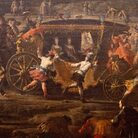 Dal 20 December 2025 al 20 April 2026
Caserta | Reggia di Caserta
Dal 20 December 2025 al 20 April 2026
Caserta | Reggia di Caserta
Regine: trame di cultura e diplomazia tra Napoli e l’Europa
-
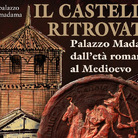 Dal 19 December 2025 al 23 March 2026
Torino | Palazzo Madama - Museo Civico d’Arte Antica
Dal 19 December 2025 al 23 March 2026
Torino | Palazzo Madama - Museo Civico d’Arte Antica
Il castello ritrovato. Palazzo Madama dall’età romana al medioevo
-
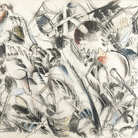 Dal 17 December 2025 al 19 January 2026
Roma | Palazzo della Cancelleria
Dal 17 December 2025 al 19 January 2026
Roma | Palazzo della Cancelleria
De Humana Mensura di Linda Karshan
-
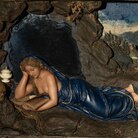 Dal 18 December 2025 al 12 April 2026
Firenze | Gallerie degli Uffizi
Dal 18 December 2025 al 12 April 2026
Firenze | Gallerie degli Uffizi
Cera una volta. Sculture dalle collezioni medicee
-
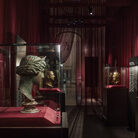 Dal 11 December 2025 al 9 April 2026
Firenze | Museo Archeologico Nazionale di Firenze
Dal 11 December 2025 al 9 April 2026
Firenze | Museo Archeologico Nazionale di Firenze
Icone di Potere e Bellezza
-
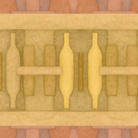 Dal 11 December 2025 al 11 January 2026
Roma | Palazzo Esposizioni Roma
Dal 11 December 2025 al 11 January 2026
Roma | Palazzo Esposizioni Roma
Giorgio Morandi nella Collezione Eni. Un viaggio attraverso la storia culturale del cane a sei zampe e l’eredità di Enrico Mattei
